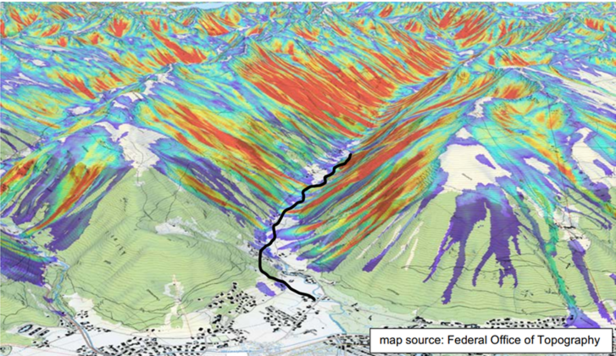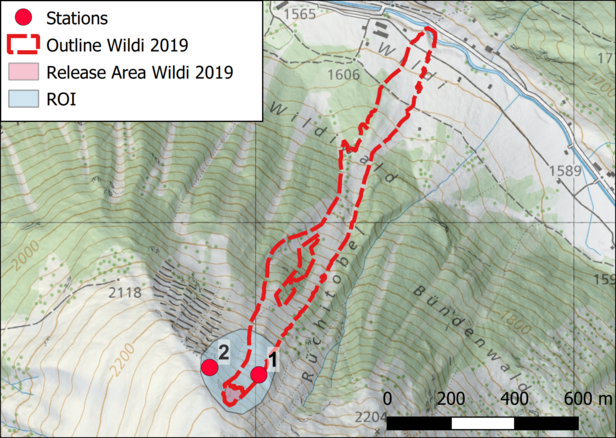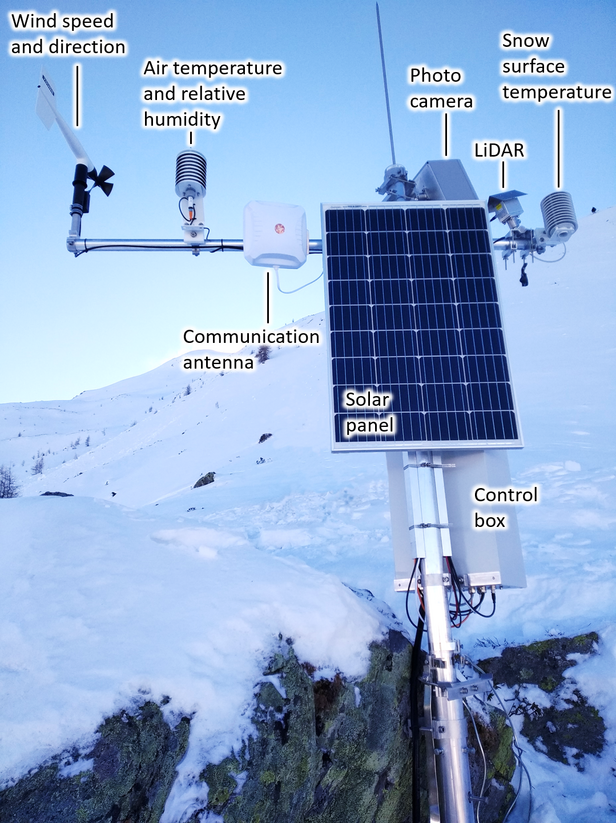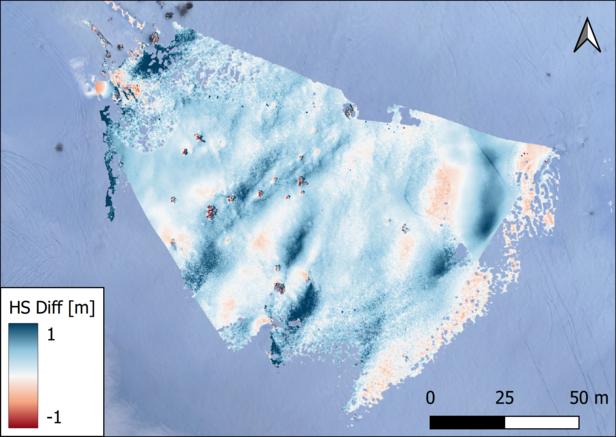Avalanche Safety for Roads
2022 - 2025
Cooperation FinancingIntroduction ¶
In alpine regions, local hazard experts face the daily challenge of making critical decisions to mitigate the avalanche risk during the winter season, ensuring the safety of traffic routes, ski areas, and residents in the face of ever-changing mountainous conditions. Currently, there are high level guidelines for determining when a road should be closed or reopened and the main decision needs to be done based on data interpretation (Stoffel et al., 2008). With this project, our aim is to expand and enhance the data available for decision-making by incorporating additional in-situ observations combined with avalanche dynamic simulations. In an initial phase, we are focusing on the Dischmaa Valley test region in Davos, where we simulate all avalanche tracks threatening the Dischma road under specific snow conditions. Our approach utilises weather station data, snow depth distribution measurements and numerical simulation tools to provide a deeper understanding of avalanches potentially reaching the road. In the initial phase, our focus is on identifying an avalanche simulation tool capable of modelling avalanche run-out in the Dischmaa Valley with a focus on powder avalanches. Subsequently, we will work on establishing a systematic approach for defining scenarios that represent the relevant snow and weather conditions in the valley. In the third step of our project, we will explore methods to effectively communicate these measurements and simulations to the local hazard experts in an understandable and actionable manner.
Goal ¶
By calculating the avalanche runout distance for different scenarios, we can predict whether an avalanche can reach a road or not. To get the necessary input information we calculate snow depth models for the different slopes and use them as an input for RAMMS:EXTENDED simulations to assess the potential runout distances.
We propose to set-up a remote sensing-based snow depth mapping system with high temporal and spatial resolution to map the snow depth distribution evolution.
The acquired information will be the base for the simulation of specific avalanche scenarios for the Dischma valley (e.g. cold dry slab avalanches, wet snow avalanches, mixed flow regimes) and different return periods with the RAMMS simulation software.

The scenarios will be evaluated by applying mapped outlines from past avalanche events, existing hazard maps and by the local natural hazard experts from the community of Davos, responsible for the Dischma valley.
The key research question is if and how these new tools can efficiently support the decision-making for road closure and re-opening. By combining cutting-edge remote sensing and numerical simulation technology into the decision-making process for avalanche danger estimation, we pave the way for more reliable decisions and higher avalanche safety in alpine valleys.
Mapping, Monitoring and Modelling Snow Depth Distribution ¶
Important input parameters for the avalanche simulation are the snow conditions and the snow depth distribution in the avalanche release area and the avalanche track. To get the best results, the input data should depict the conditions as truthfully as possible. But the snow depth is not evenly distributed across the slope and is constantly changing with the influence of wind. The group has already a lot of experience with drones to capture the snow depth distribution in alpine terrain (see: Capturing snow depths by using drones).The acquisition with drones gives information at a high spatial resolution, but in our application we also aim for a high temporal resolution. Therefore, we developed and installed a fixed, ground-based remote sensing monitoring system that is operating autonomously throughout the whole winter season to map the snow depth distribution once per hour. In a next step we will use the newly build up snow depth database, meteorological (snowfall, wind, temperature) and terrain information to develop a simulation approach, that allows us to calculate the conditions for any slope, without a costly monitoring system.



Sensitivity Analysis of Input Parameters in RAMMS:EXTENDED ¶
Nowadays, in practice the user version of RAMMS gets applied by engineering offices, authorities and scientists. Currently, the SLF team is developing and testing an SLF internal research version of the software, the so-called RAMMS:EXTENDED. With the new version, many more physical parameters can be incorporated and therefore different flow regimes such as powder- or wet snow avalanches can be simulated.
With the additional parameters, the model gets more sensitive to uncertainties in the input parameters. Hence, a detailed sensitivity analysis for the additional parameters available in RAMMS:EXTENDED must be conducted before the tool can be used by practitioners. The most important parameters will be erodible snow depth in the avalanche track, temperature of the released and entrained snowpack, variation of density during the avalanche flow and the generation of free water in the simulated wet snow avalanches.
The plan is to apply Monte Carlo simulations to assess the sensitivity of the individual parameters on the avalanche runout, deposition depth, velocity and impact pressure. As benchmark to validate the simulation results the RAMMS:USER version, further avalanche dynamic models and measurements from the SLF database will be used.
Definition of Hazard Scenarios and Modelling of Avalanche Runout Scenarios ¶
In a next step, relevant hazard scenarios will be defined in collaboration with the hazard experts of the community Davos who are responsible for closing and opening the roads. The scenarios will be calculated dependent on the new snow amounts, wind and temperature in combination with the new modelling of the snow depth distribution.
A Platform for decision makers ¶
The key output is the provision of all information for those who have to decide on safety measures for roads like closures and re-openings. All measurements and simulations are planned to be integrated in a platform in (near) real-time to support with the most up-to-date data possible. In a first step, this tool will be developed for the test region Dischma. As a future goal, this tool will be upscaled for other regions.